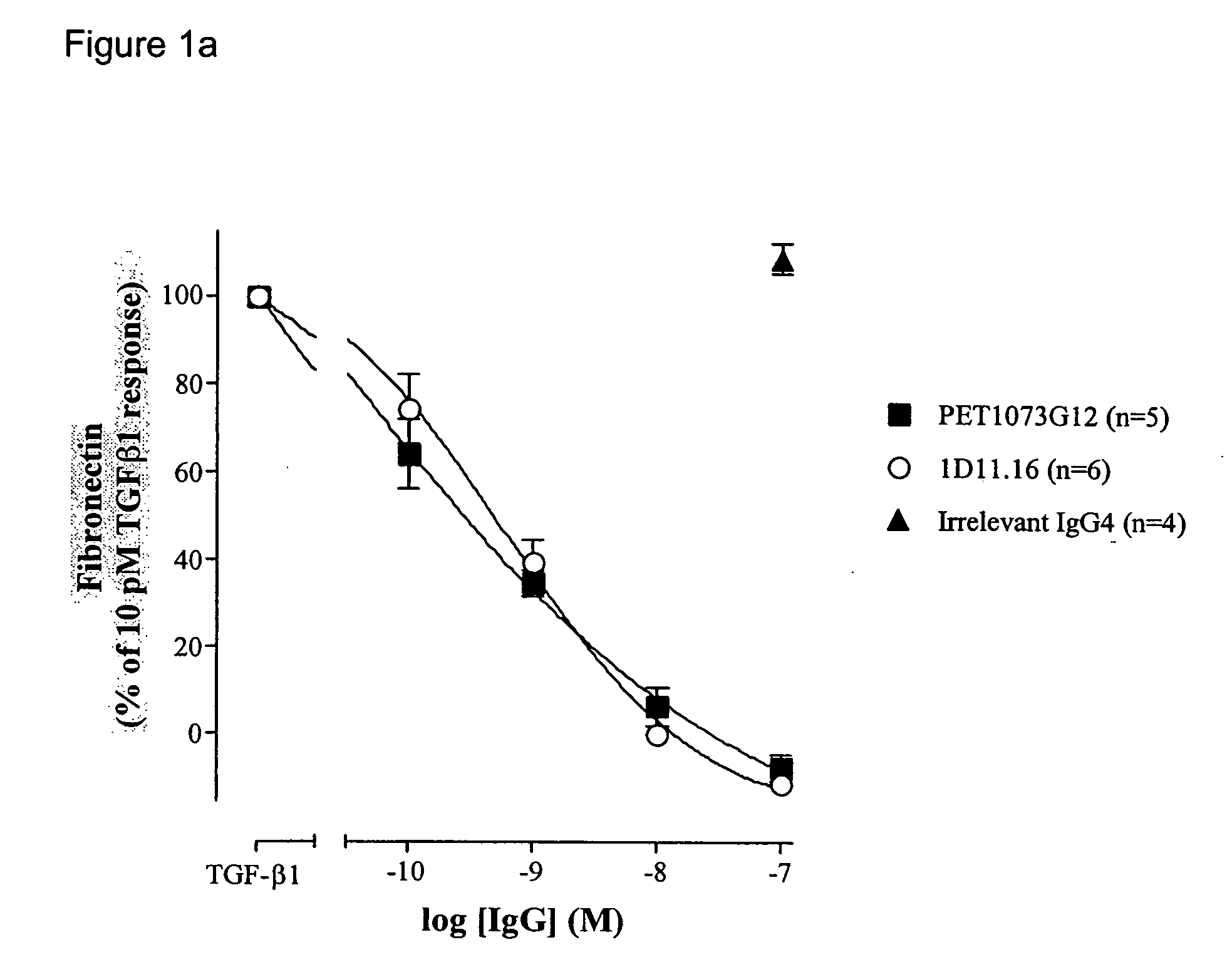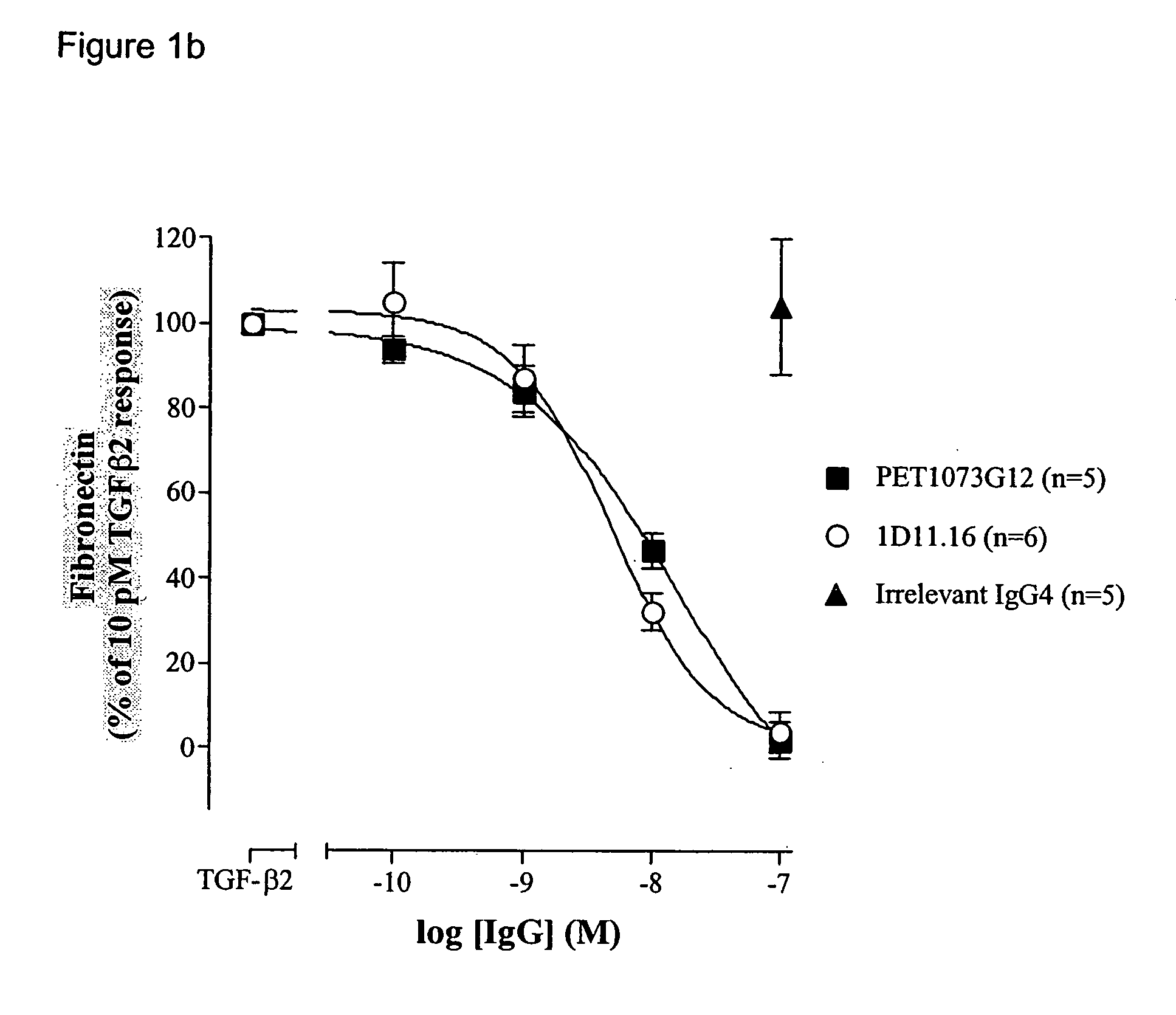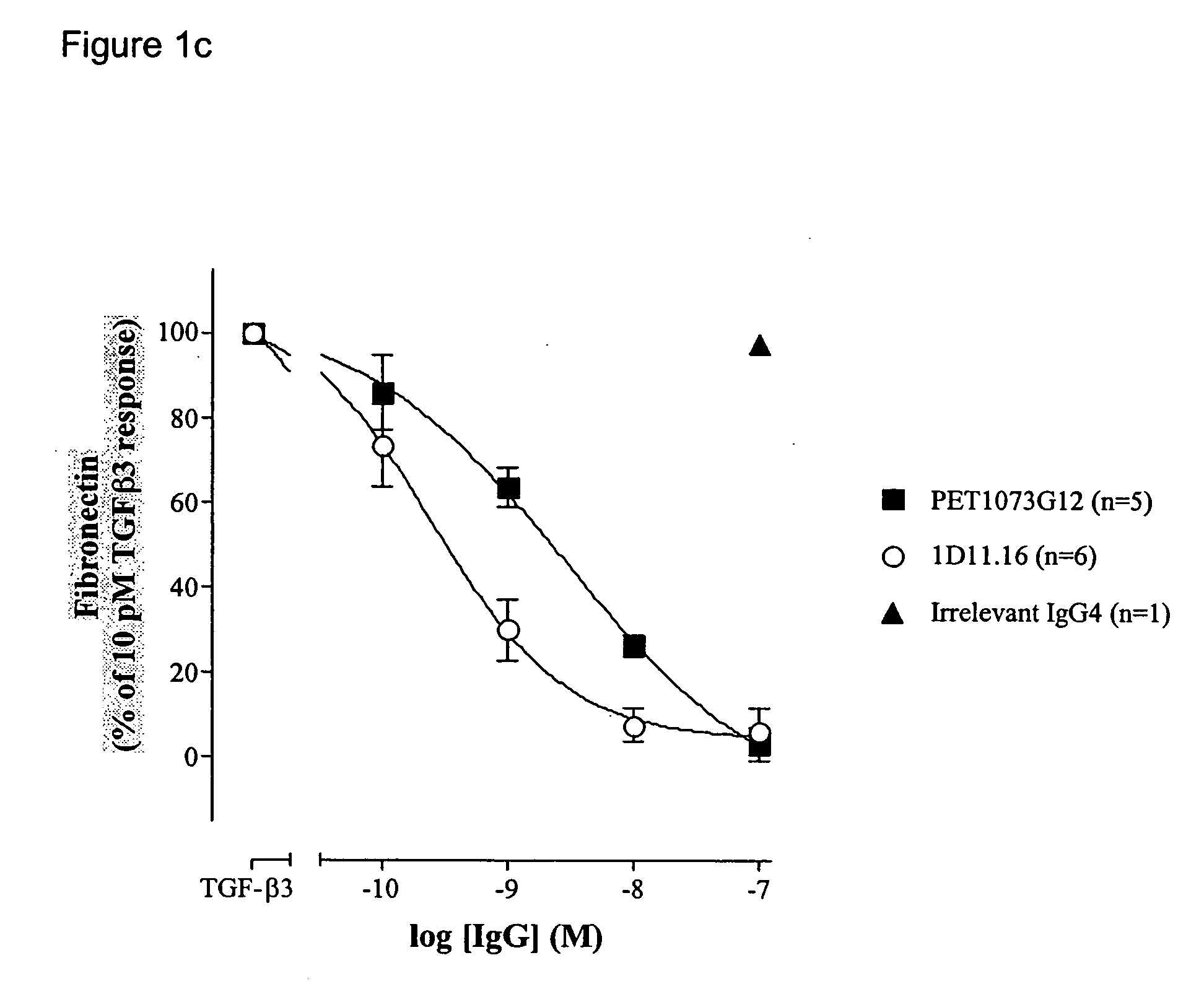Antibodies to TGF-beta
a technology of tgf and antibodies, applied in the field of antibodies, can solve the problems of limited human therapeutic benefits, difficult production of antibodies to human tgfs in mice, including transgenic mice, and raised animals, and achieve the effect of minimal or beneficial effect on activity and maintaining binding specificity
- Summary
- Abstract
- Description
- Claims
- Application Information
AI Technical Summary
Benefits of technology
Problems solved by technology
Method used
Image
Examples
example 1
Generation of Anti-TGFβ ScFvs
ScFv Naive Antibody Libraries
[0197] A large single chain Fv (scFv) human antibody library derived from spleen lymphocytes from 20 donors and cloned into a phagemid vector (Hutchings et al., 2001) was used for selections.
ScFv Guided Selection Libraries
[0198] A 1D11.16 VH-human VL library was constructed and used to select mouse-human chimeric antibodies with the desired binding properties. The human light chains from these chimeric antibodies were then cloned into human VH-VL and human VH (1D11 CDR3)—VL acceptor libraries. These libraries were screened for human antibodies with the desired binding properties.
Selection of ScFv Phage Libraries
[0199] Recombinant human TGFβ1 and TGFβ2 were supplied by Genzyme Corp. (Framingham, Mass.) and TGFβ3 was purchased from R&D Systems.
[0200] ScFvs which recognised TGFβ were isolated from scFv guided selection libraries following a series of repeated selection cycles on recombinant human TGFβ essentially as d...
example 2
Optimisation of Anti-TGFβ scFvs
[0204] ScFvs binding and neutralising TGFβ were generated as described in Example 1. The neutralisation potencies of these antibodies were increased on TGFβ1 and / or TGFβ2 and / or TGFβ3 using DNA mutagenesis and / or combinatorial techniques. Antibodies with significantly improved potencies on TGFβ1 and / or TGFβ2 and / or TGFβ3 were generated by selecting and screening phage antibody libraries essentially as described in Example 1. The scFvs generated were compared to 1D11.16 in the MLEC proliferation assay.
[0205] Particular germlines were found to be highly represented amongst the population of high potency, TGFβ-neutralising scFvs. These were DP-10 / 1-69 and DP-88 / 1-e (both members of the VH1 germline family) for the heavy chain, and DPK22 / A27 (Vκ3 family) for the light chain. These germlines appear to provide a structural framework particularly suitable for high potency, TGFβ pan-neutralising antibodies. This was not predictable, since 1D11.16 VH gene se...
example 3
Production of IgG4s
[0210] The germlined scFvs PET1073G12, PET1074B9 and PET1287A10 were converted from the scFv format to the IgG4 format by sub-cloning their VH and VL domains into vectors expressing whole antibody heavy and light chains respectively. The VH gene segment was amplified from the pCantab6 scFv expressing vector and cloned into the pEU8.1(+) vector containing the human γ4 heavy chain constant domains and regulatory elements to express the whole heavy chain in mammalian cells. Similarly, the VL gene segment was amplified from the pCantab6 scFv-expressing vector and cloned into the pEU3.1(−) vector containing the human K light chain constant domains and regulatory elements to express the whole light chain in mammalian cells. The pEU3.1(−) and pEU8.1 (+) vectors were based on the vectors described by Persic et al. (1987) and were modified to introduce the oriP sequence to increase the yields of antibody produced (Shen. et al., 1995; Langle-Rouault et al., 1998). Followi...
PUM
| Property | Measurement | Unit |
|---|---|---|
| concentration | aaaaa | aaaaa |
| concentration | aaaaa | aaaaa |
| concentration | aaaaa | aaaaa |
Abstract
Description
Claims
Application Information
 Login to View More
Login to View More - R&D
- Intellectual Property
- Life Sciences
- Materials
- Tech Scout
- Unparalleled Data Quality
- Higher Quality Content
- 60% Fewer Hallucinations
Browse by: Latest US Patents, China's latest patents, Technical Efficacy Thesaurus, Application Domain, Technology Topic, Popular Technical Reports.
© 2025 PatSnap. All rights reserved.Legal|Privacy policy|Modern Slavery Act Transparency Statement|Sitemap|About US| Contact US: help@patsnap.com



